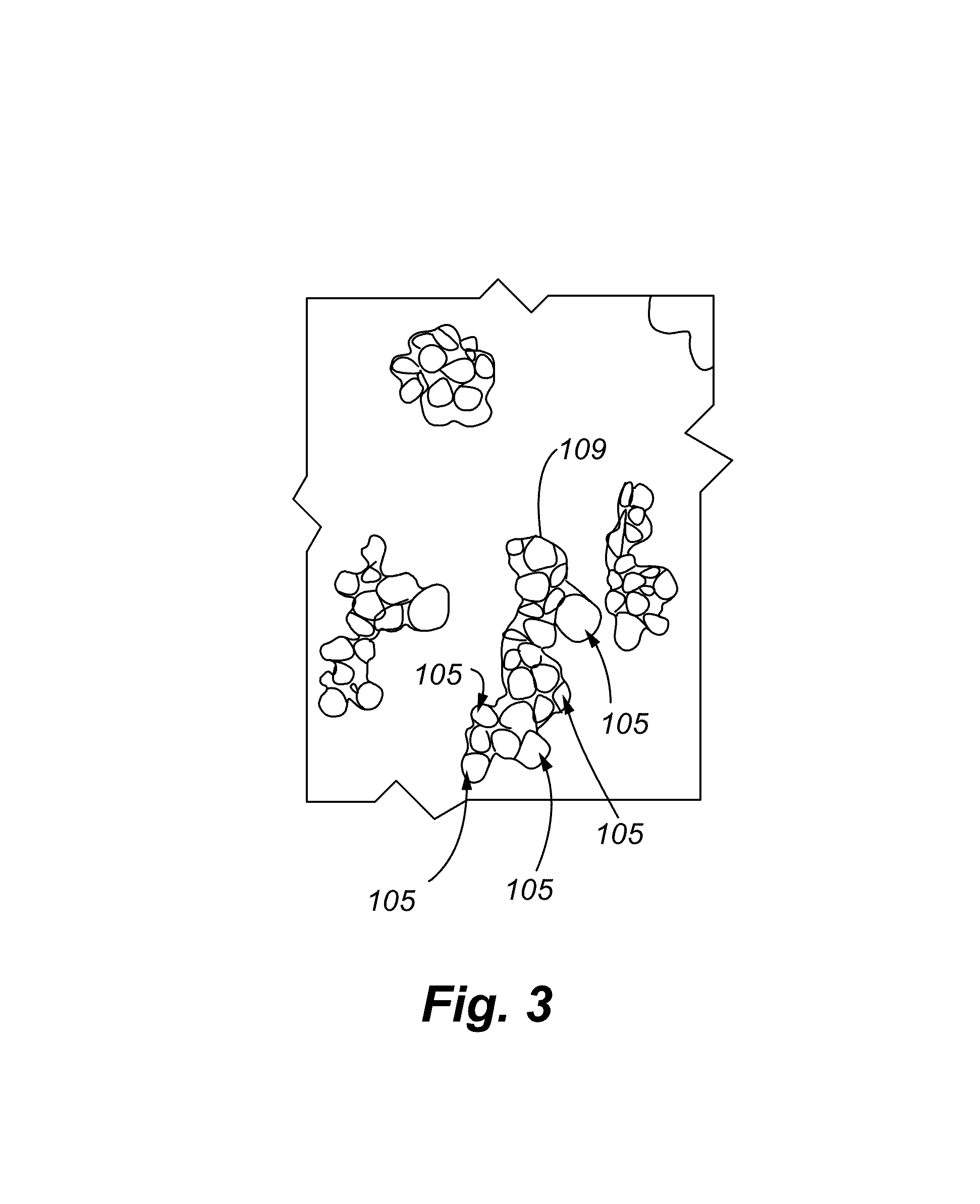High performance carbon nanocomposites for ultracapacitors
a carbon nanocomposites, ultracapacitors technology, applied in the direction of non-metal conductors, cell components, conductors, etc., can solve the problem of poor electrolyte accessibility to carbon, and achieve the effect of high viscosity
- Summary
- Abstract
- Description
- Claims
- Application Information
AI Technical Summary
Benefits of technology
Problems solved by technology
Method used
Image
Examples
example a
[0244]Conventional activated carbon electrodes were prepared from a slurry comprising an activated carbon (specific surface area: of about 2000 m2 / g) and a carbon black from Acheson Industries in a polymer binder of poly(vinylidene fluoride-co-hexafluoropropylene) (PVdF-HFP) from Sigma-Aldrich. The polymer binder was dissolved in a solvent blend (75 parts 1-methyl-2-pryyolidone, 25 parts acetone) to form a polymer solution. The slurry was formed by adding certain amounts of the activated carbon and carbon black to the polymer solution. The slurry was pulled down and casted by a coating knife blade on a current collector (aluminum foil) to form a coated current collector. The coated current collector was heated at 80° C. for 1 hour, followed by a 1 hour annealing at 260° C. The annealed coated electrode had a uniform carbon coating.
Characterization of the Conventional Activated Carbon Electrodes
example b
[0245]The conventional electrode of Example A has an annealed carbon coating thickness ranging from about 100 to about 200 μm and a density ranging from about 6 to about 7 mg / cm2.
[0246]The affect of the activated carbon: carbon black: polymer binder ratio on the electrode physical properties (such as, surface area, conductivity, coating formation and coating adhesion to the current collector) were determined. The electrode physical properties were determined for a activated carbon: carbon black: polymer binder ratio of 61.5 / 20.5 / 18.0 (wt. %). The morphology of the coating prepared by the process of Example A (FIG. 11) and a commercial activated carbon / carbon black available from WL Gore and Associates, Inc. (FIG. 2) are similar. FIG. 12 depicts the similar electrochemical properties of the two electrodes in a conventional organic electrolyte. The electrode has a capacitance of about 60 F / g. The physical characteristics of the conventional activated carbon electrode are similar to th...
example c
[0247]Carbon nanotube papers were prepared by vacuum filtering a carbon nanotube suspension through a polytetrafluoroethylene filter paper. The carbon nanotube paper was washed (by filtering) first with methanol followed by de-ionized water (to remove any residual sodium hydroxide and / or surfactant). After the washing process, the carbon nanotube paper was dried and characterized.
[0248]Characterization of Carbon Nanotube Paper
PUM
| Property | Measurement | Unit |
|---|---|---|
| electrical conductivity | aaaaa | aaaaa |
| length | aaaaa | aaaaa |
| ionic conductivity | aaaaa | aaaaa |
Abstract
Description
Claims
Application Information
 Login to View More
Login to View More - R&D
- Intellectual Property
- Life Sciences
- Materials
- Tech Scout
- Unparalleled Data Quality
- Higher Quality Content
- 60% Fewer Hallucinations
Browse by: Latest US Patents, China's latest patents, Technical Efficacy Thesaurus, Application Domain, Technology Topic, Popular Technical Reports.
© 2025 PatSnap. All rights reserved.Legal|Privacy policy|Modern Slavery Act Transparency Statement|Sitemap|About US| Contact US: help@patsnap.com



